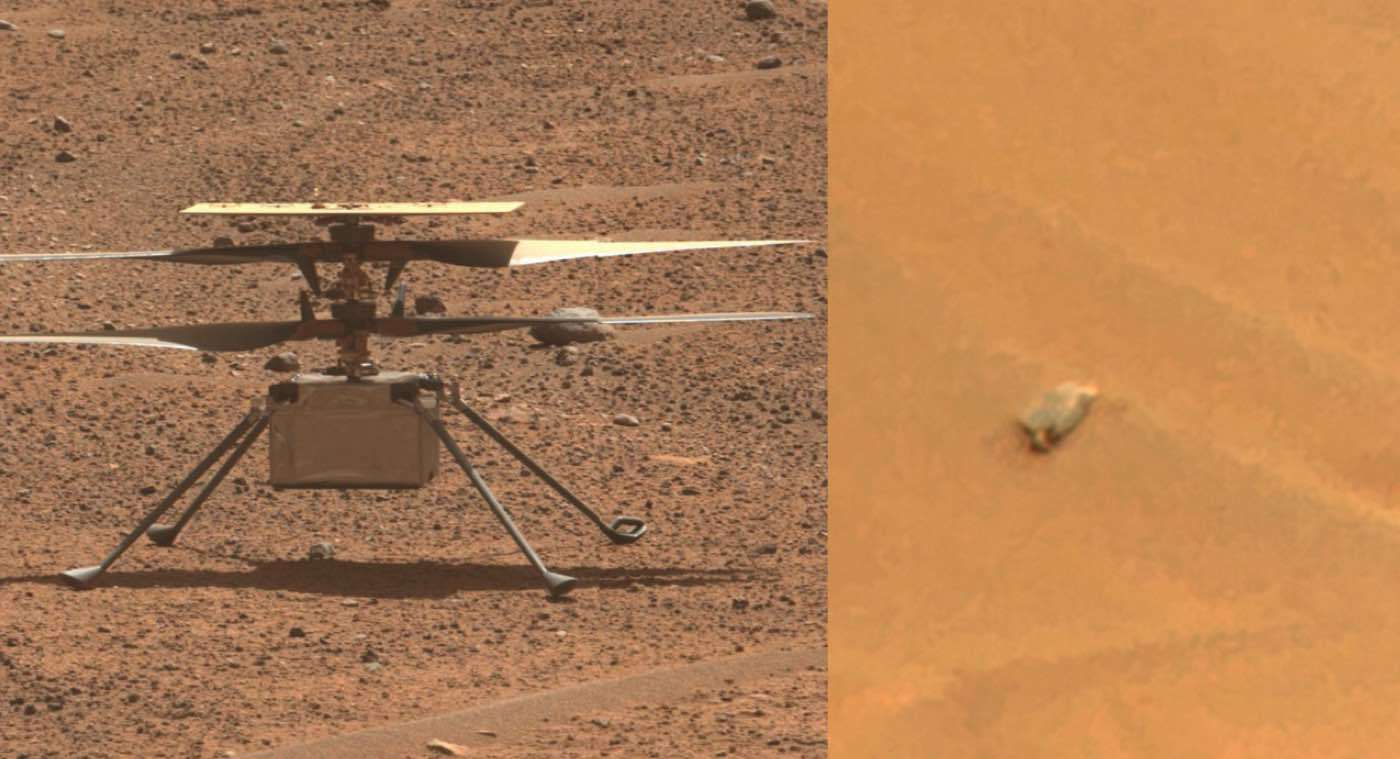Bumblebees Share Knowledge Like Humans and Chimpanzees, Suggesting the Hive Mind Is More Personal
Bumblebees are social insects that have proven themselves capable of acquiring non-natural behaviors, like string-pulling and ball-rolling.

In the continuing saga of NASA's presence on the Red Planet, they just reported locating the broken rotor blade lost by the stricken Mars helicopter.
They say a large portion of the blade has been spotted lying on the dune-like surface, about 50 feet to the west of the small aircraft.
Ingenuity performed 72 flights, but the rotor mishap left it stranded in the Jezero Crater location.
The Remote Microscopic Imager (RMI) camera aboard NASA's Perseverance Mars rover took zoomed-in images of the scene on February 24—the 1,072nd Martian day of the mission.
A mosaic of these pictures shows the helicopter to the right of the blade, standing at an angle near the apex of a sand ripple.
The Ingenuity team is considering a theory that the blade detached after the rotorcraft impacted the Martian surface at the conclusion of the helicopter's 72nd and final flight on 18 January.
"Able to spot a softball from nearly a mile away, the RMI allows scientists to take images of details from a long distance. It also provides fine details of nearby targets zapped by SuperCam's laser," reported NASA.
The space agency announced the end of the mission for Ingenuity on January 25, stating the "history-making Ingenuity Mars Helicopter has ended its mission at the Red Planet after surpassing expectations and making dozens more flights than planned."
Originally designed as a technology demonstration to perform up to five experimental test flights over 30 days, the first aircraft on another world operated from the Martian surface for almost three years.
Ingenuity flew more than 14 times farther than planned while logging more than two hours of total flight time.
A key objective for Perseverance's mission on Mars is astrobiology, including the search for signs of ancient microbial life. The rover will characterize the planet's geology and past climate, pave the way for human exploration of the Red Planet, and be the first mission to collect and cache the Martian rock and dust.
Subsequent NASA missions, in cooperation with ESA (the European Space Agency), would send spacecraft to Mars to collect these sealed samples from the surface and return them to Earth for in-depth analysis.
The Mars 2020 Perseverance mission is part of NASA's Moon to Mars exploration approach, which includes Artemis missions to the Moon that will help prepare for human exploration of the Red Planet.
Be the first to comment